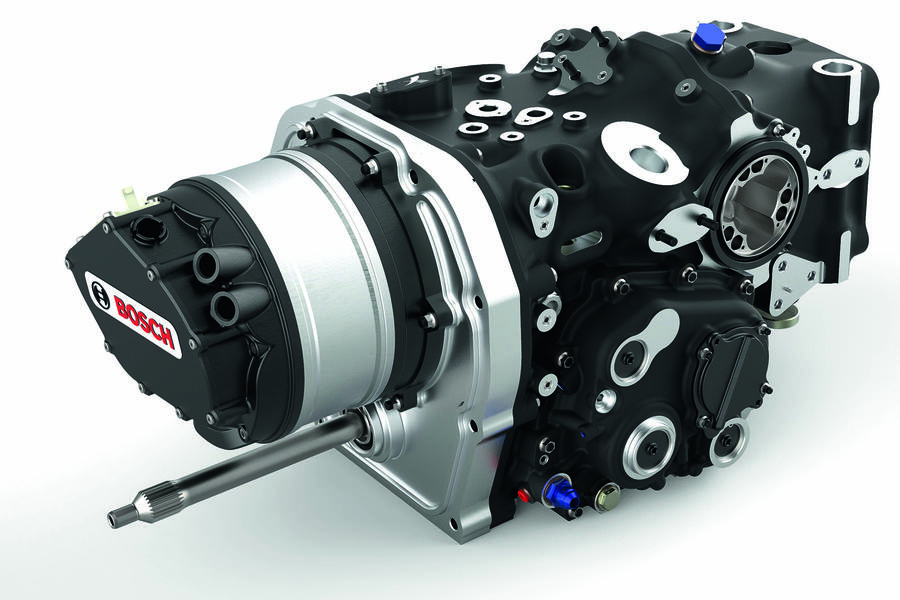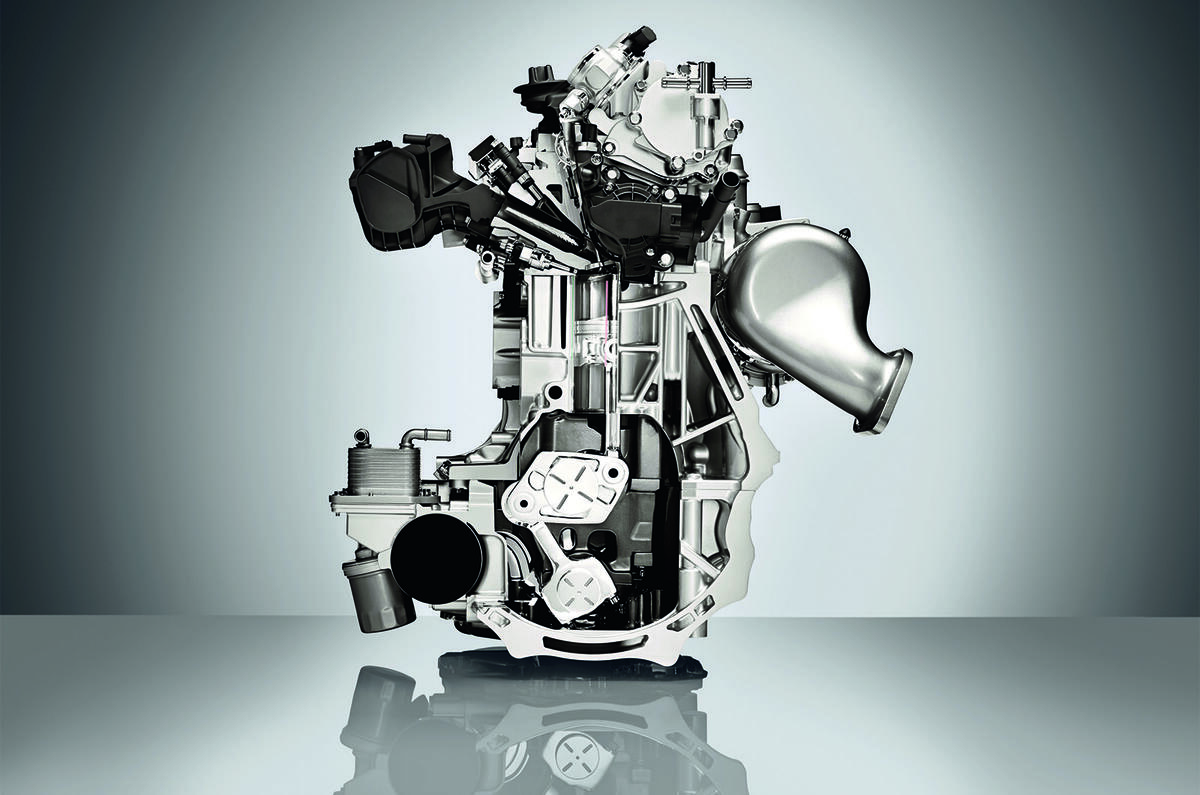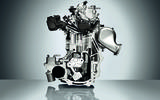Engineers have been trying to perfect variable-compression engines for almost as long as engines have existed. So far, though, only Nissan has succeeded in bringing one to production. Its Variable Compression Turbo (VC-T) technology does what so many have failed to do: alter the compression ratio of the engine while it’s running.
This ratio is that between the swept volume of a cylinder (the part of the cylinder through which a piston travels, or sweeps) and the swept volume plus the combustion chamber volume (the unswept volume). The combustion chamber at the top of the cylinder is where the fuel and air are compressed by the piston and ignited.
The higher the pressure in this chamber, the more efficient the combustion and the more power is made. There’s a caveat to this, though: create too much pressure and rather than burning evenly (desirable), the fuel-air mixture will detonate (undesirable and potentially engine-busting).
Detonation can be avoided by increasing the octane rating of the petrol to make it burn slower or retarding the ignition so that the fuel burns as the piston is already heading downwards on the power stroke, reducing the pressure in the cylinder. This can be done on the fly using knock sensors to detect the onset of detonation, but that reduces efficiency and power.
The equation gets even trickier when you introduce turbocharging. A turbocharger pressurises the intake air, raising the pressure in the combustion chamber still further. Early turbo engines ran relatively low compression ratios to keep pressures below the knock threshold when on boost. The downsides were that performance, efficiency and engine response off boost all suffered and lag was rampant. Modern knock sensors allow for higher mechanical compression ratios, but the ideal is to vary the mechanical compression ratio on the fly.
Many wacky ways of doing this have been tried. Saab’s late engine genius Per Gillbrand sawed an engine block in half horizontally, hinged the top half along one side and sealed the gap with bellows, like on an accordion. By rocking the top half of the block using electronics and a cam, the combustion chamber in the top of the block moved up and down in relation to the crankshaft and pistons. It worked, but it probably wasn’t that practical.
Another example was a two-stroke engine designed by Lotus Engineering. Named the Omnivore, it could adapt itself to different fuels by altering its compression ratio. A small, piston-like puck in the cylinder head moved in and out to create a larger or smaller combustion chamber volume.
Neither made production, but Nissan’s VC-T has in the Mk6 Altima and Infiniti QX50. Each piston’s connecting rod joins to the crankshaft via an articulating joint, and manipulating that joint with a set of links moves the throw of the pistons up or down. Up increases the compression ratio to 14:1 for better efficiency at low turbo boost; down decreases it to as little as 8:1, allowing higher boost for more power. It’s a little complicated but devilishly clever.
Ten horsepower per kilo

Xtrac, which began life in the 1980s making transmissions for international rally cars, is still at the top of its game. Today, it’s supplying the hybrid transmission for the new Le Mans Daytona Hybrid endurance racing cars. The seven-speed transverse gearbox contains the motor-generator unit (MGU) in a magnesium casing that forms a structural part of the car. It weighs only 78kg sans MGU yet can handle 785bhp.
READ MORE
Under the skin: Why the straight-six engine is on the way back
Under the skin: The Octopus that's helping Bentley's sustainability







Join the debate
Add your comment
My old Renault gt5 turbo
had a knock/pinking sensor and and that was the height of sophistication back then (or at least it was to me). Nothing much seems to have changed except much on the compression front it seems except for for fuel injection etc etc. Likely not gonna be worth investing in ICE tech anyway with EV' tech looming meaning that "torque from the off" is now a simple matter.
Compression ratio
What a poor article. To start with, the author's definition of compression ratio is wrong. Here's the correct one:
The compression ratio is the ratio of the volume of the cylinder and the combustion chamber when the piston is at the bottom, and the volume of the combustion chamber when the piston is at the top.
The rest is not very informative. Does the author understand the subject?